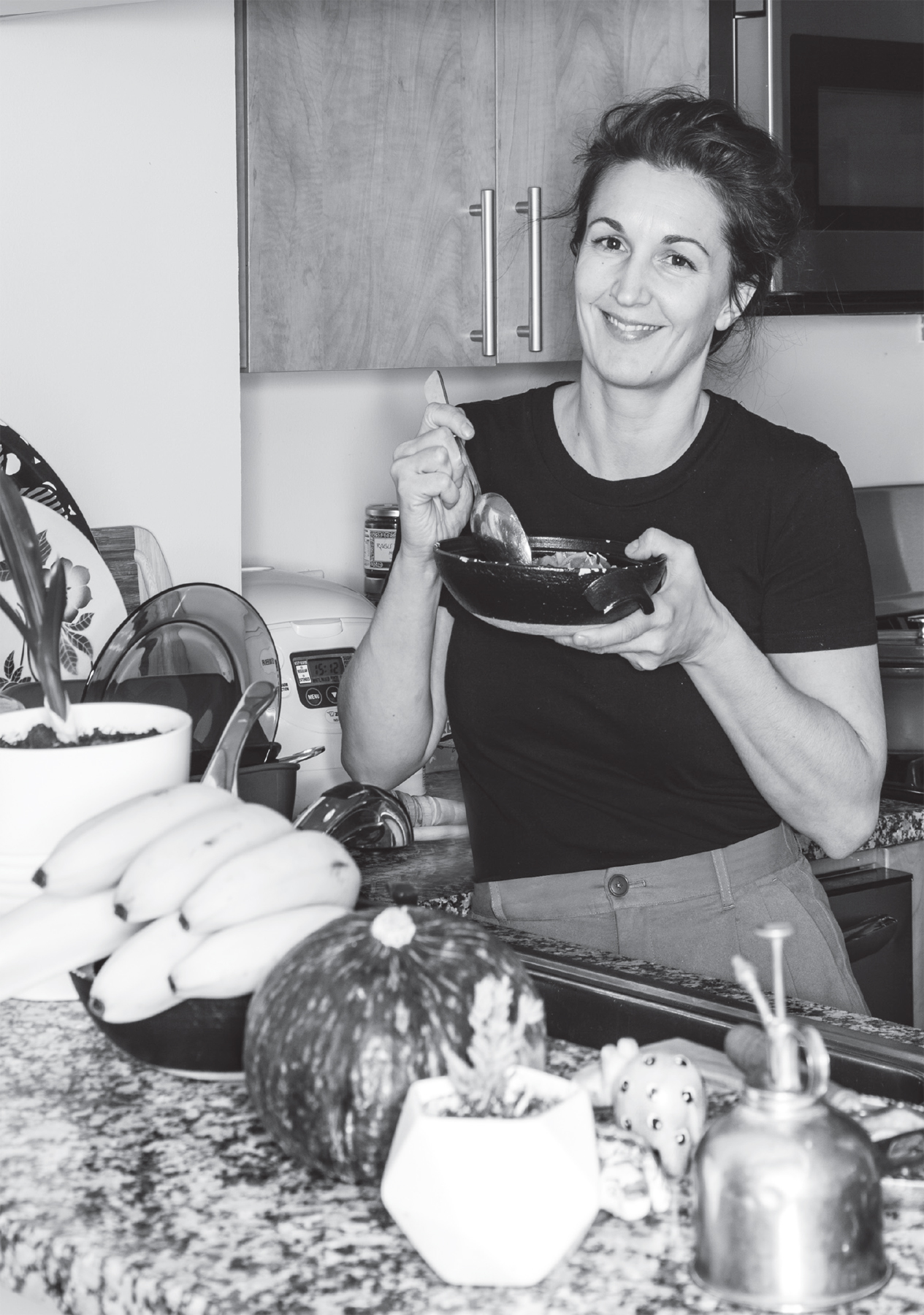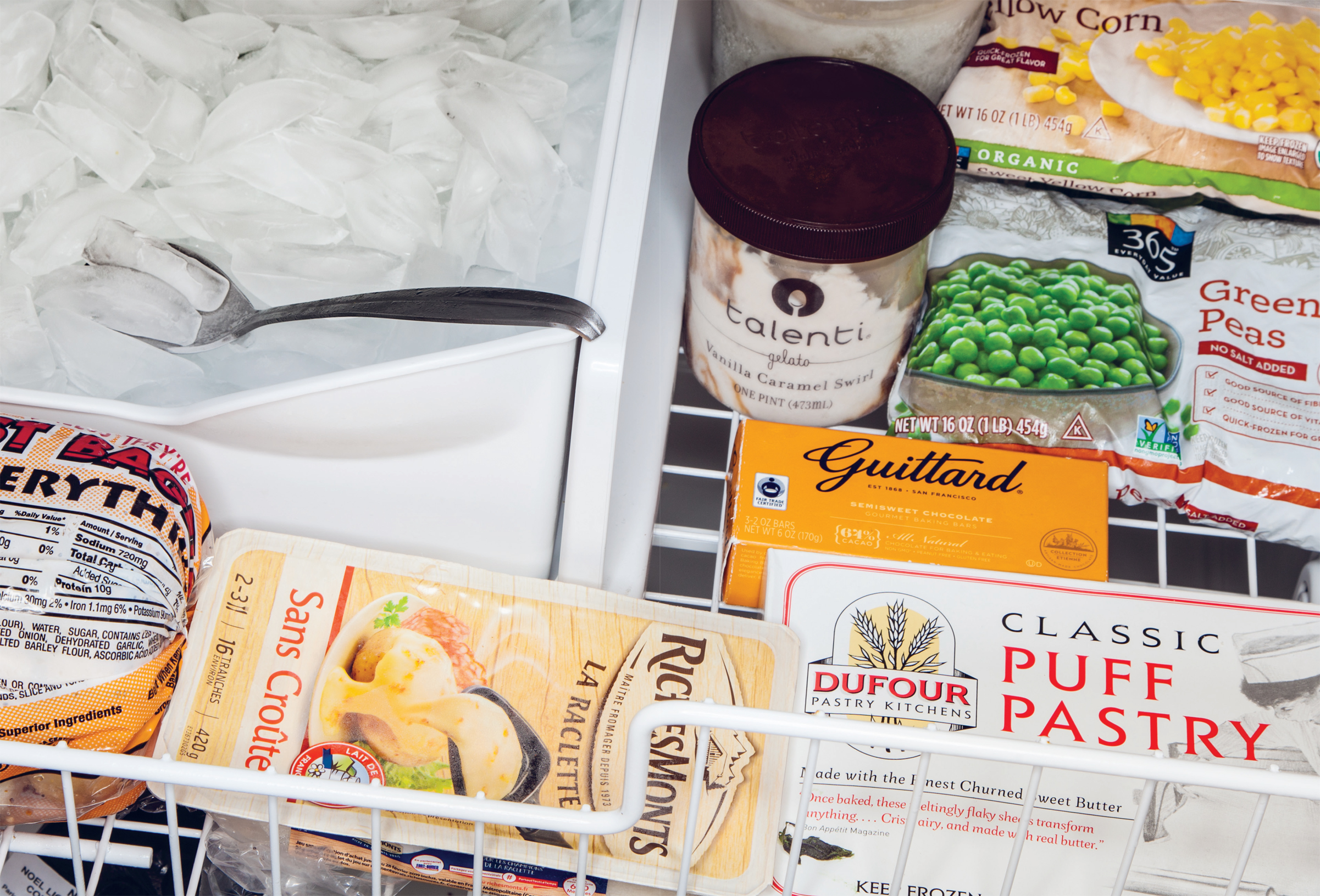Marie-Aude Rose first tried to go to cooking school at age fourteen, but the director shooed her away, telling her “it was not a job for her.” Little did he know, though, that she had been making poulet au vinaigre from her mother’s cookbook forever and brioches with her grandfather from age nine. As a student at the Sorbonne in Paris, Rose majored in American culture, but on the weekends she studied the Parisian food markets and cooked French classics for her friends. For a time, she was an actor, but even that didn’t make her as happy as cooking did, so she finally entered the Parisian culinary school, École Ferrandi.
After seven years working her way through Paris’s Michelin-starred restaurants steeped in rigor and technique, Rose got an offer to work at Thomas Keller’s French Laundry in California. But on the eve of her departure, she had dinner at a tiny restaurant in Paris’s 9th arrondissement, and from there, her plans changed—the chef of Spring, an American from Chicago named Daniel Rose, needed a hand in his closet-sized kitchen.
When Rose started cooking at Spring in 2007, she was inspired by the young chef’s irreverent manner; he had come to study in Paris and ended up cooking his way through France. The two worked side by side. At the end of each day they would discuss the next day’s menu, “which would allow me to order and then of course things would change by the following day as he’d get inspired by something else.” Rose liked the dynamic and found it refreshing. There was no pressure to live up to Michelin standards, and instead of perfection, she could create one prix-fixe meal a night based on seasonal fare, working alongside the chef and connecting with the customers, who were sent home after dinner with thick slices of banana bread for breakfast the next day.
The duo worked well together—in and out of the kitchen. In 2012, Marie married Daniel Rose. From there a string of successes followed: a larger Spring, two new bistros, and, in 2016, a move to Manhattan with their two young children. There, Daniel opened Le Coucou, which won a James Beard Award for best restaurant a year later.
After a couple of years in the city, Rose, along with the architects who had designed her husband’s restaurant, wanted to open a design store with a European-style restaurant. “Little by little the position appeared to be perfect for me and we started dreaming about it and then it became real,” she says. La Mercerie, a French-style café just around the corner from Le Coucou, opened up in December 2017. There Rose delivers French classics, like her signature flaky croissants and roasted bone marrow with Bordelaise sauce and horseradish. Diners can take home not only pastries but also the cutlery, dishware, and even their table.
When Rose opened La Mercerie, she was there all day, every day, for the first five months, though now she works only days as well as a couple of night shifts every week. Between her and Daniel—whose schedule is quite flexible—one of them is often home at night to put the kids to bed. Still, two chef parents means you have to be organized, which is why Rose prepares dinners in advance for nights when she and Daniel both have to work—and then labels them.

CURRENT HOMETOWN: New York City
RESTAURANT THAT MADE HER NAME: Spring, Paris
SIGNATURE STYLE: Traditional and modern French
BEST KNOWN FOR: Co-chef at La Bourse et la Vie (Paris) along with her husband, Daniel Rose; her crepes; and as the chef at La Mercerie in New York City
FRIDGE: Frigidaire

- COCONUT OIL—“I bake with this as Daniel doesn’t do well with dairy.”
- AMARENA CHERRIES, for cocktails
- PEANUT BUTTER—“I discovered peanut butter when I was thirteen. I was bugging my mom to find peanut butter in France; it was hard to find.”
- PARMESAN CHEESE
- WHITE BREAD, from Maison Kayser, a French-style bakery—“It’s the closest to what we get in France and there is no other boulangerie around us, not like in France where there’s one at every corner.”
- SHREDDED CARROTS WITH GREENS—“A good appetizer we all like.”
- CRÈME FRAÎCHE
- GOAT CHEESE CRUMBLES, for salads
- BABYBEL CHEESE—“It’s for the kids and myself, it carries a bit of nostalgia.”
- PETIT SUISSE YOGURT WITH FRUIT
- LEFTOVER LENTILS WITH SAUTÉED BRUSSELS SPROUTS
- CREPE BATTER—“I make crepes once or twice a week, and my kids also come for them at the restaurant; they love them so much.”
- CARROTS
- MINI TORTILLAS
- PEELED ONIONS—“I like to always have them for when I want to make something with meat, fish, or soup. Some-times I cut them and freeze them too.”
- LEFTOVER VEGETABLE PIECES, from a soup recipe and also for crudités
- FERMENTED CABBAGE
- TOMATO SAUCE
- BEEF PATTIES
- CHICKEN THIGHS, VEAL CUTLETS
- BABY SPINACH
- CHIVES

Q & A
In your opinion, is American sour cream almost as good as French crème fraîche? No, it’s not. . . . I can find good cheese here, although it’s expensive.
Who does the cooking at home? You or your husband? Daniel cooks at home on the weekends, although he is making Passover dinner tonight.
What do your French-American kids like to eat? They really like baby bok choy. You can definitely eat healthy here.
They don’t like American kids’ favorites like chicken nuggets and mac ’n’ cheese? Not really. But they do like ketchup, either with a beef patty or rice.
What do you miss most foodwise from France? I miss the fishmongers and butchers. It doesn’t seem as fresh here, and the whole fish at the markets just look sad.
What is an average weeknight dinner for you? I don’t usually make it home in time to eat dinner with my kids. I eat the leftovers from their dinner. I keep it light, as most days I eat a late lunch at work around four p.m.
What are a couple of typical meals you prepped recently for your kids? Green peas à la française with breaded veal cutlets. That takes me about an hour to prep. Or I might make celery en remoulade with hachis parmentier (shepherd’s pie), which takes me about thirty minutes.
Who eats the fermented cabbage? It’s for Daniel. I make it for him. He has food restrictions—no gluten, dairy, or seafood. So the bacteria is good for him.
All these items in your refrigerator seem really healthy. We try not to eat processed food at home. If I can’t prep dinner, I will order ahead at Sweet Greens. They have hot bowls and salads, quinoa, salmon, roast squash, walnuts—that’s a good healthy meal. I set it up so the babysitter can pick it up. We generally eat balanced meals. We don’t eat meat every day. We eat organic dairy except when it is French.
Do you remember what you ate the first night you had dinner at Spring? Vividly—there were little raw clams, followed by squab served with almond puree and cherries, and a strawberry dessert with a lemon curd and some cream. It was amazing.
Do you think lunch boxes are a good idea for school? Or do you think a lunch system like the one in France, where the kids all have a hot meal, is better? I like the French system. It’s also getting better every year, I feel, because many public schools are going organic. It’s always a balanced meal; I really think it’s best. I did do lunch boxes for my kids for two years and loved it. But I had the time—I wasn’t working at that time, and now that I work I would go insane if I had to do it.
What do you bring back from France when you go home? Sea salt, olive oil, chocolate, and little cookies called Petits Coeurs. You know what is missing here that I can’t bring back? Chipolatas! All of the sausages here are too sweet.
A fridge mantra to live by? Use all perishables before going back to the store, meaning empty the refrigerator so we can start fresh and not waste.